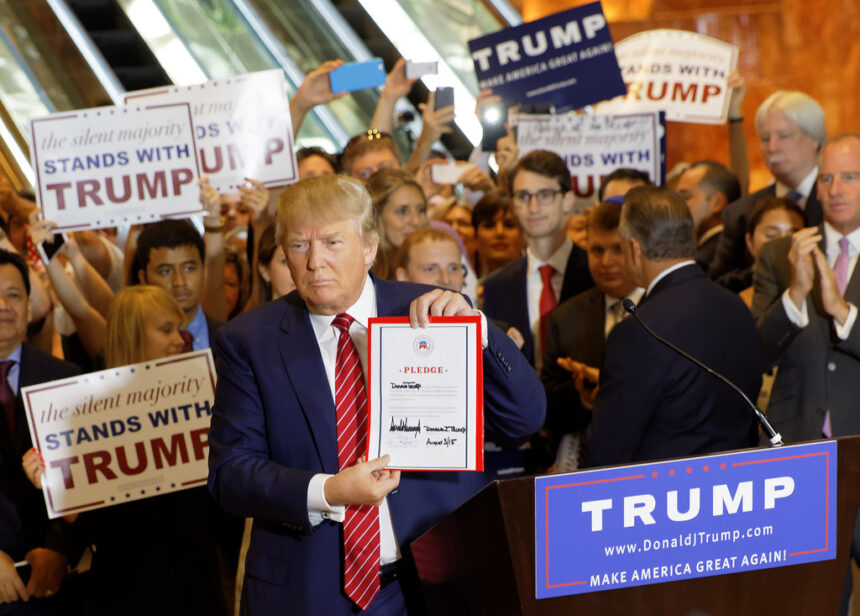Donald Trump’s long awaited unveiling his trade plans – dubbed “Liberation Day” – has sent shockwaves throughout global markets. But what exactly is being freed remains a topic of intense debate. Is it to protect the US economy against global competition?
The US dollar losing its position as a world reserve currency? Or maybe, cordial relationships with key trading partners?
The full impact is yet to be seen, as the 25% auto tariffs have not yet kicked in. Also, the universal 10% tariffs are scheduled to go into effect on April 5, followed by the “reciprocal tariffs” on April 9. However the initial market reaction was a resounding negative.
Trump’s optimistic declarations that “The markets will boom” are not true. The stock will boom. The country is about to boom,” was the headline. However, the immediate aftermath of the announcement was anything but a celebration for investors who were on the wrong end of a massive sale.
Panic on Wall Street – a flight to safety
Investors, far from feeling liberated after Thursday’s trading, fled to bonds for relative safety, seeking shelter from Trump’s policies.
The markets reacted in a brutal way.
- Stock Market Bloodbath: S&P 500 plunged 4.84% and Dow Jones Industrial Average fell 3.98%. These are their biggest declines since June 2019. The Nasdaq Composite fell 5.97%, its worst session since march 2020.
- Small cap stocks in bear territory: Since the 52-week high, the Russell 2000 Index has declined by 6.59%. This puts it into bear market territory. Bear market territory is defined as a decline of 20% or more.
- Bond rally: The benchmark yield on the 10-year Treasury fell to as low as 4%, as investors piled in bonds and drove prices up.
The Magnificent Seven are wiped out by a trillion dollar wipeout
According to CNBC, the “Magnificent 7” tech giants suffered the most from the sell-off. They collectively lost approximately $1.03 trillion of market capitalization.
Apple shares fell over 9%, their steepest drop in five years.
Apple’s list of suppliers is largely composed of countries that are disproportionately affected Trump tariffs. This could be a plausible explanation.
Stagflation looming? Experts warn about economic peril
The market turmoil has stoked concerns of stagflation – a toxic combination between slowing economic growth, and rising prices.
Goldman Sachs’ director of multi-assets fixed income, Lindsay Rosner, warned CNBC about Trump’s tariff plans that could slow down growth and increase prices. JPMorgan economists predict that Trump’s policies on trade “would likely push both the US and global economies into recession this year.”
This would put the Federal Reserve in an awkward position, forcing them to choose between fighting inflation, stimulating economic growth, or standing back and letting events unfold without intervention.
Global fallout: European markets slammed
The impact of Trump’s tariffs went beyond the US borders. European stocks were also severely affected.
The Stoxx 600 pan-European index fell 2.57% with major retail brands amongst the worst performers.
Maersk, a shipping giant that is often regarded as a bellwether of global trade, fell 9.5%. Robert Habeck, the acting German Economy Minister, responded by saying that Trump would “buckle” under pressure and change his tariff policies if Europe united.
The upcoming jobs report is a major concern for investors as they deal with the fallout of the tariff news. A weak jobs report, warned one market strategist, could be “a nail on the coffin for US economy.”
The UK, which has a more balanced trade relationship with the US, was hit with 10% duties instead of the European Union’s 20%.
Most analysts agree that the expected slowdown in the growth and the fracturing trade ties will have few, if any, economic winners.
This post Red Alert: Donald Trump’s Trade War Sends Stocks Tumbling Worldwide may be modified as new developments unfold.
This site is for entertainment only. Click here to read more






